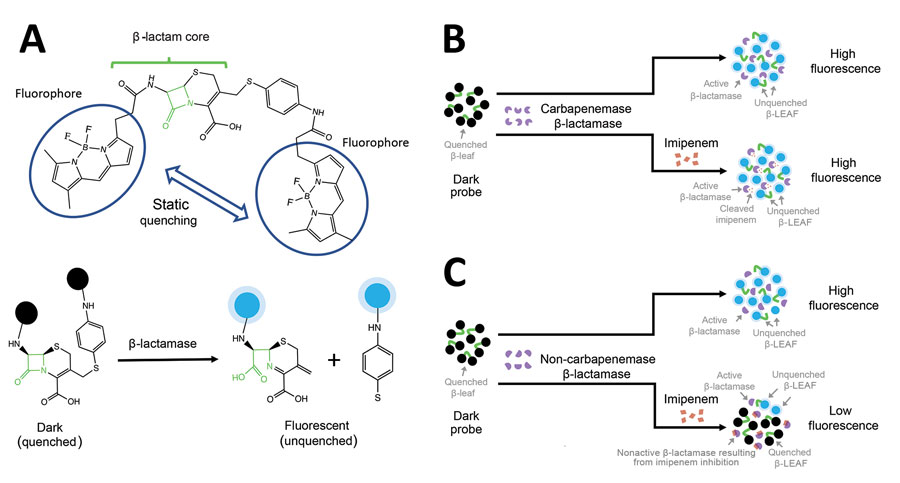Volume 26, Number 4—April 2020
Research Letter
Novel Rapid Test for Detecting Carbapenemase
Figure

Figure. Schematic illustration of the principle of fluorescence identification of β-lactamase activity. A). The β-lactamase–activated fluorophore probe comprises a cleavable β-lactam core conjugated to 2 fluorophores (circled) that are quenched because of close proximity. This construct was designed to mimic the enzymatic degradation properties of easily cleavable β-lactam antimicrobial drugs. When this probe is attacked by β-lactamase, the probe core is cleaved, leading to the separation of the fluorophores and the recovery of their fluorescent properties (fluorescent state). B) Assay profile for carbapenemase-producing bacteria. C) Assay profile for non–carbapenemase-producing bacteria. Black, quenched fluorophore; blue, unquenched fluorophore turning fluorescent; green, β-lactam core; red, imipenem; purple, β-lactamase. β-LEAF, β-lactamase enzyme–activated fluorophore.
1These authors contributed equally to this article.